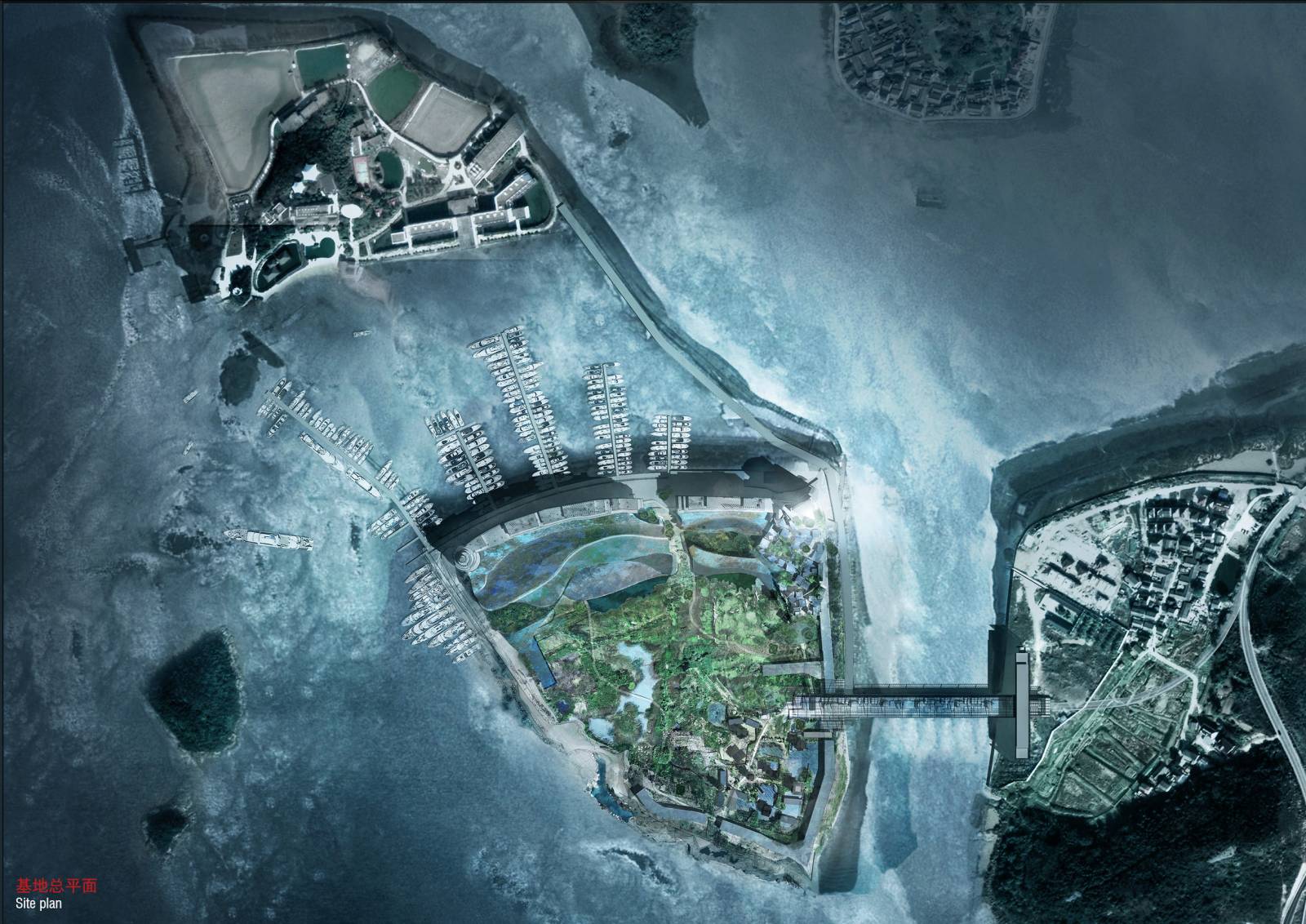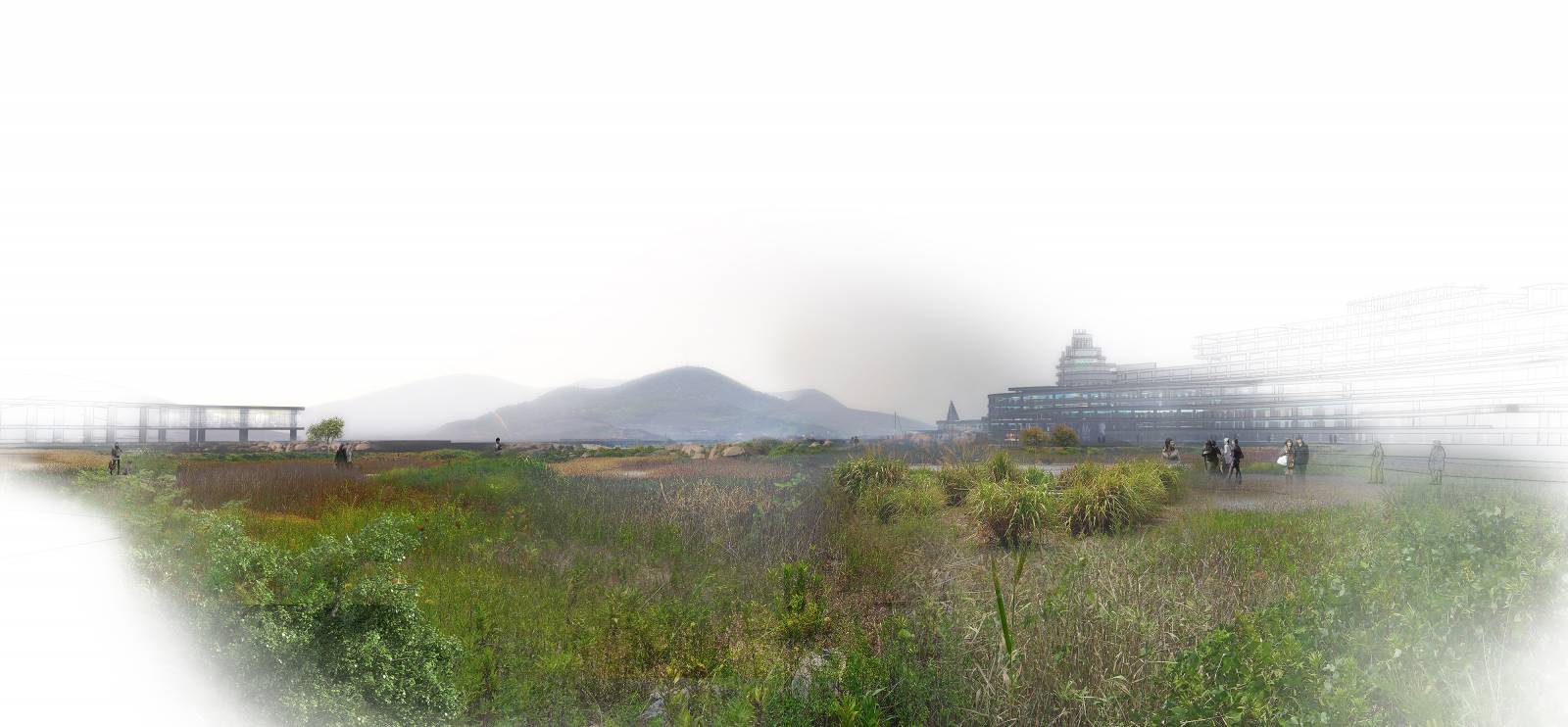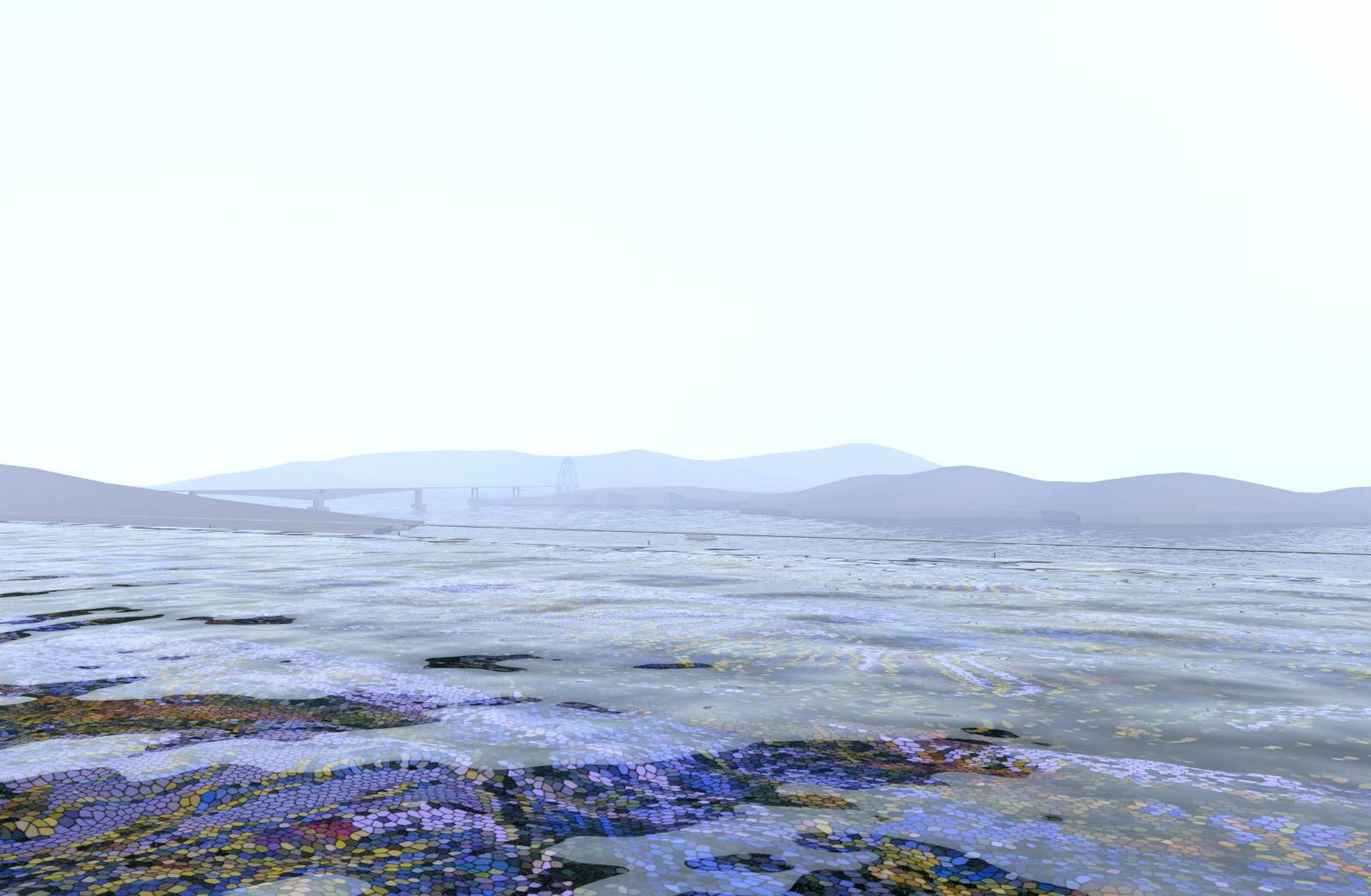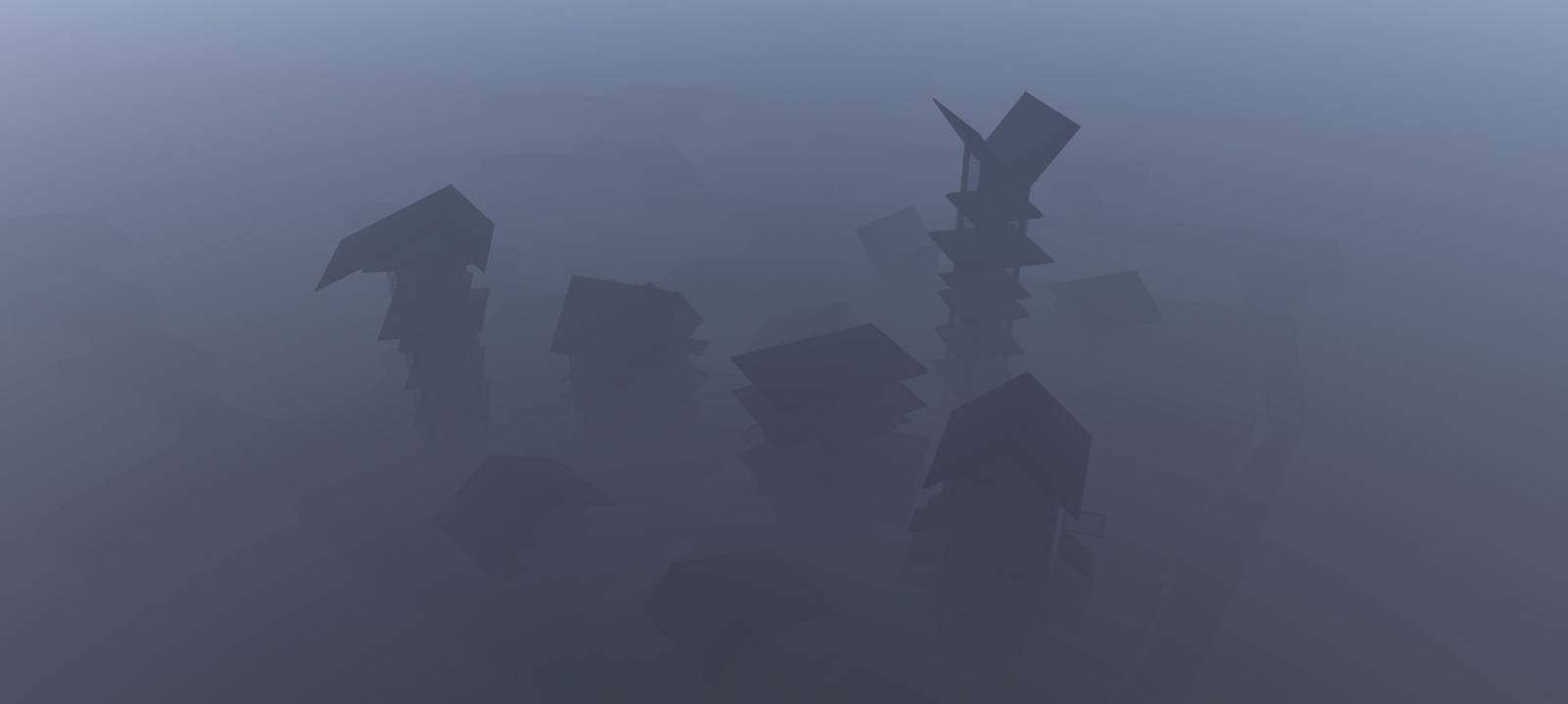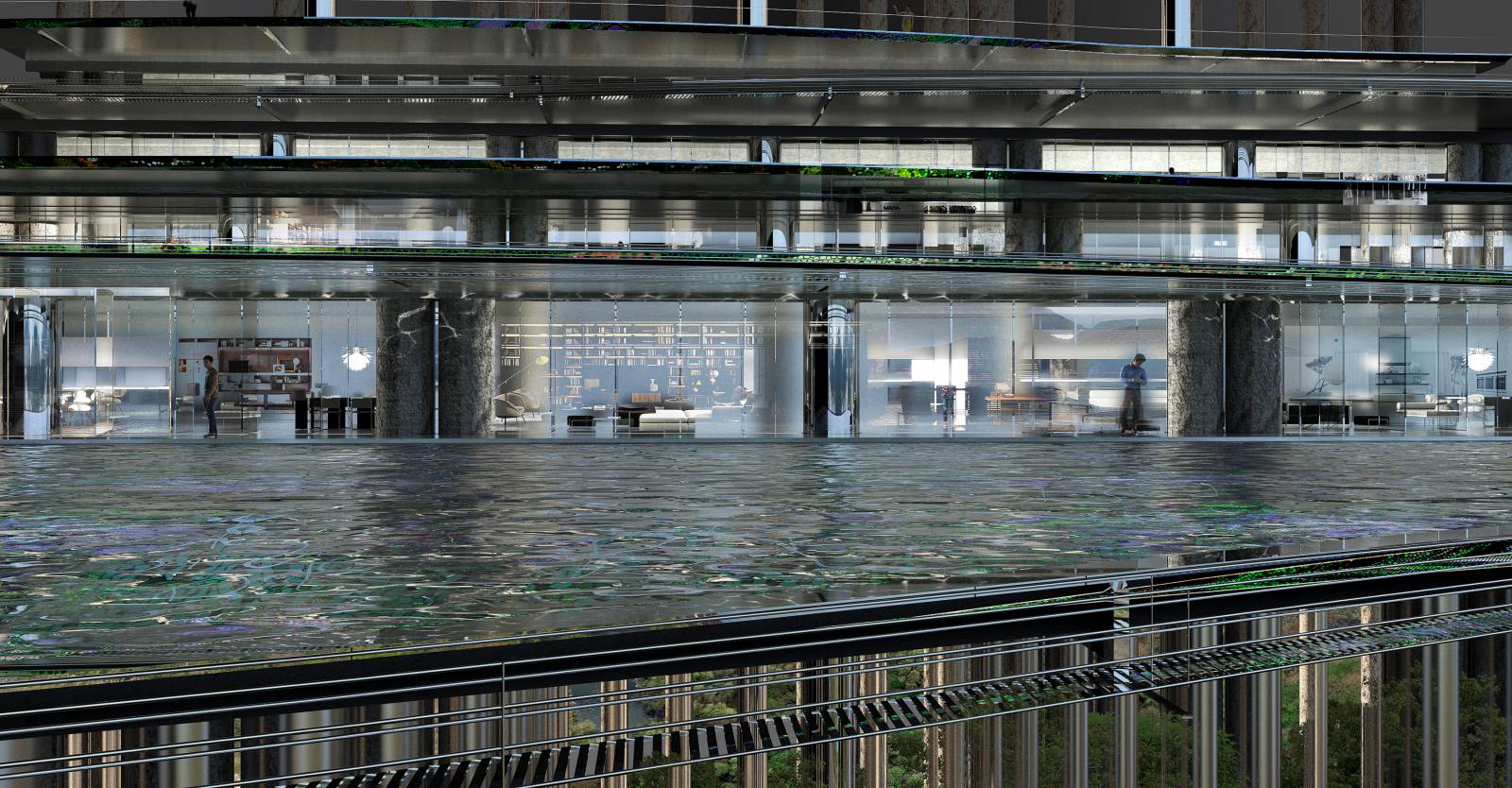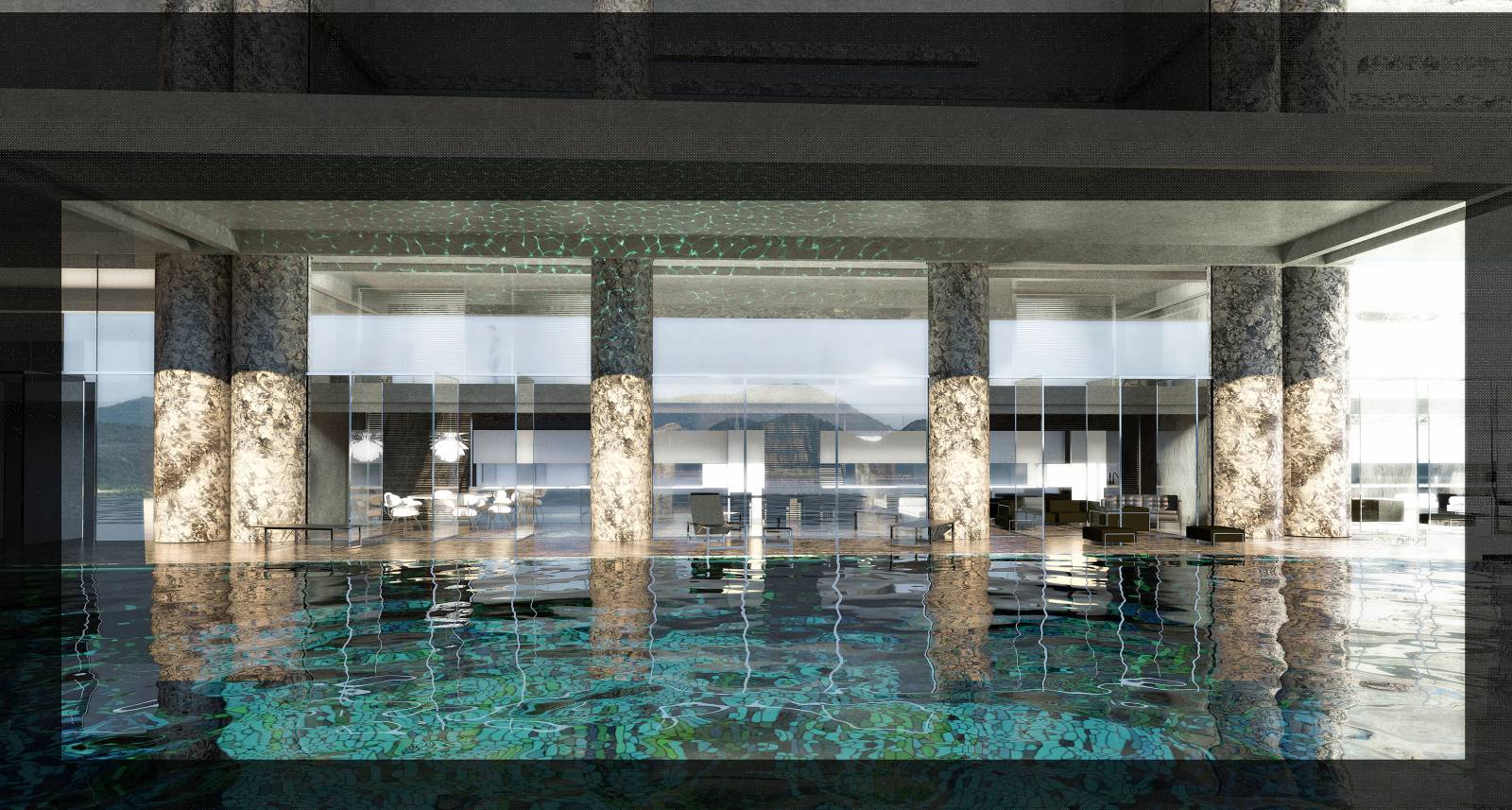Phoenix Island 凤凰岛
- Zhoushan, China
THE NOVEL OF AN ISLAND
SKETCH SKETCHES ON SEDIMENTATION
The Zhoushan archipelago is in itself a geographic symbolization of our world, and even a cosmological evocation.
Each island has its own character, as a planet has its strangeness.
Huang Di Ji and Feng Huang islands are examples of this.
Now abandoned, they call for an imagined future. Therefore, they also incite us to know their history and origins.
When clues, millenarian information, are uncertain, the search for History leads to interpretations, beliefs, often linked to cultures which have been erased, but not entirely forgotten.
So we discover Phoenix Island (Feng Huang Island), the Phoenix which came by day and would sleep straight across there, on the royal flat land. On Putuo Island, the pilgrimage carries on today, to honor the many statues of Buddha. Such ancient myths, and Gods still worshiped.
In order to qualify the island, one needs to pay homage to the most dreamlike interpretations of its past.
In my native region, Périgord, architects form the Historical Monuments Service are rebuilding a medieval castle from just a few shapeless remaining stones.
Often, when the territories to be built are “without history”, architects will invent one. That is narrative architecture.
In order to make Huang Di Ji Island even more attractive and mysterious once built, the architect must write Huang Di Ji and Feng Huang Islands’ novel, as well as that of the surrounding mountains and of the islands belonging to their numerous family.
The island’s poetic aspect arises from traces, memorial itineraries, from a vanished project, traces swallowed by water, lotus trees and a few recent fragments of sheetpiles and concrete iron bars.
We will tie the island’s perspective to its access and links to the East and Chang Shi Island, today an unfinished bridge that we shall re-imagine. This door will become a door-building, crossed with loggia terraces which will reveal the archipelago on one side, and the mountain on the other.
Like many other maps, probably with bases in Buddhist culture, the island translates as a great central vacant space, a large park, around which the buildings are organized.
The landscape is flat, naturalist, and has been excavated to reveal the water in this royal flatland, in relation to the neighboring sea.
In the dialog between Huang Di Ji Island – where the Phoenix would come during the day – and the surrounding mountains, a bastion, a den, emerges on the northeastern corner, as an echo to their prominence.
On the rocky slopes of that peak, a village has been settled, remarkably oriented toward the South, with a full view of the sea and mountains.
Almost contiguous, straight to the South of there, great ponds are lain out, evocations of the terraced rice-fields or fish-ponds seen on neighboring islands and territories.
Housing built along these ponds enjoy marine horizons.
In the end, what this constitutes is an acceleration of sedimentation. One could think that these elements are linked to the history and the myths. One could think that they were built through the previous centuries, that they were later transformed, and that we now interpret their meaning in correspondence to the beliefs and myths.
As we travel around the island, we install porticoes to see the park through it. This contrast between this horizontal disposition and the surrounding buildings, the skyline with the peak and its bastion, the village below and, on the other side a sort of watchtower with cylinders marking the other angle. A third angle of the triangle, composed of a pointed triangle, a stone glacis. All this give the place a distinct character, between the built perimeter and the protected landscape.
One will access all this over a bridge. That bridge is an inhabited bridge, under which the boats pass. Coming from Changshi, the bridge will pass along Huang Di Ji Island all the way to Feng Huang Island.
So there is a link, a vision of this sedimentation, in the placement of the marina, which puts Feng Huang and Huang Di Ji Islands in relation with each other. It creates a new life in common, and the Phoenix’s realm becomes hospitable once more.
This architectural attitude is a consequence of the realization of the passing of time, of times: times passed, times forgotten, present times and their inventions.
It is also an invitation to imagine future situations.
Sparks surge from the meeting of different eras, materials, techniques and know-hows that coexist, creating so far unknown feelings and emotions.
The present is at once the threshold and the door to the future, surprises, and new, more and more hedonistic and optimistic lifestyles.
Jean Nouvel
这两座如今闲置的岛屿让我们产生了为它们设想一个未来的欲望,也因此促使我们去了解它们的历史和由来。
在线索并不明确的情况下,数千年来留下的各种信息,在历史中的各种找寻,都被转化为对于已被抹去,但并未被完全遗忘的文明的各种解读和各种信仰。
我们同样发现了凤凰岛的故事:相传凤凰在此出现,在对面平整尊贵土地(皇地基岛)上休憩。在相距不远的普陀山,信徒们仍不远万里前来膜拜观音佛国。
由此可见,今天的人们仍热衷于古代的各种神灵神话。
为了赋予岛屿价值,我们必须怀着尊敬的态度去解读其最为梦幻的过去。
在我的家乡法国Périgord地区,历史古迹建筑师们曾根据已形迹模糊的一些石头遗迹重新建造了一座中世纪城堡。
常常,而且,当要被建设的领地“没有历史”时,建筑师们往往会为其创造出一个故事。这便是会讲故事的建筑。
为了使建成后的皇地基岛更加充满吸引力和神秘感,建筑师必须为皇地基岛、为凤凰岛、为围绕它们的山岭、为群岛大家族的其它岛屿创造一部长篇小说。
这座岛屿的诗意来自于它自身具有的痕迹。对一个未见天日的方案的草图的回忆,这些痕迹被水塘侵蚀、被荷花占据,遗留下几段历史并不久远的钢板桩、几截混凝土钢筋。
我们将岛屿的未来发展和它的入口们及其与东面长峙岛的关系紧密相连。我们将重新设想这座未完工的现有的桥梁,将其转变为一座进入岛屿的门户,一座桥-建筑物,一个个露台贯穿其间,一侧属于群岛,另一侧属于山丘。
岛屿本身,可能被视为与佛教文化的一种联系:如同很多佛学图画将世界表现为位于中央的“空”,我们的岛上有一座巨大的中央花园,围绕着它组织起建筑的群落。
岛上的景观是平整的、自然风貌的、镂空的,以便在这片“尊贵平整之地”上凸显水面与周围大海的呼应。
皇地基岛和凤凰居住的岛屿的对话发生在在岛屿的东北角,在对话的过程中,出现了一座“堡垒”,一个岩穴,它们的高低起伏于周围的山岭遥相呼应。
在这座尖峰的嶙峋山坡上排布着一座村庄,户户朝南,面朝大海和山丘。
面南连续设置的数片大水池勾起人们对遍布于群岛及周边领地里的鱼塘或梯田的自由联想。
沿着这些水池建造的住宅享受着这一道道“海平线”。
最终我们在这里构建完成的,是一个沉淀的加速工作。人们会相信,这里所呈现的所有元素都与历史有关、与各种神话传说有关。
人们会相信这些元素来自于被改造过的几个世纪以来的旧建设,人们今天会用信仰和神话的角度去解读它们今天的意义。
当人们围着岛漫步的时候,我们安置了数座门洞,以便人们能透过它们去看中央花园,去发现地平线和周围建筑物之间的反差,尖峰、堡垒、其下的村庄,还有另一端的了望塔共同构成一条天际线,这座圆柱形的了望塔界定了这座三角形状岛屿的第三个端点。一个三角形的尖角,一处石头护坡构成了这个端点,这一切让岛屿在其坚固的边界建筑和其内部被保护着的景观间创造出一个鲜明的个性。
人们将通过一座桥才能穿越这座岛屿上的一切。这是一座可以居住的桥,桥下通船,桥面上通车以抵达皇地基岛以及凤凰岛。
因此这也体现出一种联系,一种对这种沉淀进程的表达,它使凤凰岛和皇地基岛进行对话,并在它们之间设置一处游艇码头。我们在这里创造出一种崭新的共同生活,为这片凤凰福地营造出一种开放好客的姿态。
这一建筑姿态来自对时间的领悟,这是一种多重的时间: 过去的时间、被遗忘的时间、当下的时间以及这些多重时间创造的产物。
这同时也开启了对各种未来前景的想象空间。
这些由不同时代、材料、技术和能力的碰撞产生的火花聚集在一起,创造出前所未有的崭新感受和情感。
当下是一道门槛、一扇大门,它通往未来,通往惊喜,通往越来越充满享受和乐观的生活方式。
